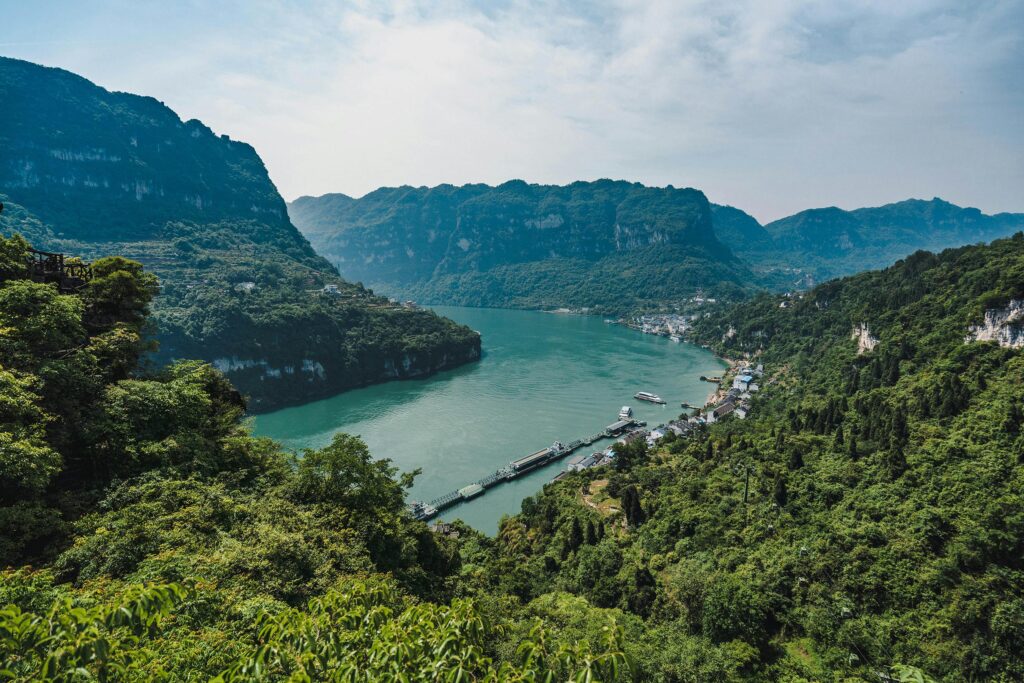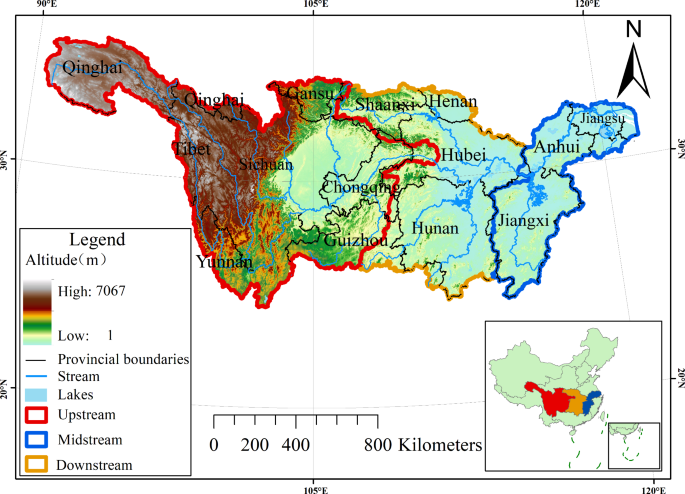The Yangtze River Basin (YRB) is a crucial ecological region in China, home to abundant vegetation resources and serving as a vital environmental safeguard. A new study has shed light on the intricate relationship between vegetation net primary productivity (NPP) and terrestrial water storage (TWS) in this dynamic ecosystem.

Researchers analyzed 23 years of data on NPP, climate factors, and water storage components to uncover the spatial and temporal patterns driving vegetation growth in the YRB. Their findings reveal a complex interplay between these factors, with important implications for managing the region’s ecological future. Yangtze River, Net primary productivity, Terrestrial water storage, Ecosystems
Unraveling the Spatial and Temporal Patterns of Vegetation Growth
The Yangtze River Basin (YRB) is a vast and diverse region, spanning mountains, hills, basins, and plains across central and eastern China. This complex geography, combined with a subtropical monsoon climate, supports a wide range of vegetation types, from coniferous forests to agricultural lands. Understanding the dynamics of vegetation growth in the YRB is crucial for ensuring the region’s ecological stability and sustainable development.

Mapping the Uneven Distribution of Net Primary Productivity
The researchers began by analyzing the spatial distribution of vegetation net primary productivity (NPP) in the YRB from 2000 to 2022. NPP is a key indicator of plant growth, reflecting the amount of organic matter accumulated by green plants over time. Their analysis revealed significant regional disparities, with higher NPP values in the southeastern parts of the basin and lower values in the northwest.
To further quantify these differences, the researchers divided the YRB into five NPP categories based on numerical averages: low, medium-low, medium, medium-high, and high. They found that the proportion of high-value NPP areas increased from 2000 to 2022, indicating an overall improvement in the region’s ecological environment.

Table 1 The data used in this paper.
Tracking the Upward Trend in Vegetation Growth
The researchers also examined the temporal changes in NPP across the YRB over the past two decades. Their analysis showed a clear upward trend, with 87.72% of the region experiencing increases in vegetation growth. This positive trend was most pronounced in the upstream provinces of Sichuan, Chongqing, and Qinghai, potentially due to recent environmental protection policies, such as the establishment of ecological conservation zones and the conversion of farmland to forests.
To further assess the stability of these NPP changes, the researchers calculated the coefficient of variation (CV) for each area. The results indicated that the YRB as a whole exhibits relatively high stability in vegetation growth, with the middle and downstream regions demonstrating the greatest consistency.

Fig. 2
The Crucial Role of Water in Vegetation Growth
One of the key factors influencing vegetation growth in the YRB is the availability of water. The researchers explored the relationship between NPP and various water components, including terrestrial water storage (TWS), surface water (SWS), soil moisture (SM), and groundwater (GWS).
Their analysis revealed a strong positive correlation between NPP and TWS, with 71.14% of the YRB showing a direct relationship between the two. However, the researchers also found an inverse relationship between the temporal trends of NPP and TWS, suggesting that vegetation growth consumes water resources, particularly groundwater.
Unraveling the Lag Effect of Water on Plant Growth
Further investigation revealed that the relationship between water components and NPP is not immediate. The researchers found a significant lag effect, with SWS and SM taking approximately one year to positively influence vegetation growth. In contrast, GWS exhibited a weaker lag effect, indicating that plant growth is more directly linked to this water component.
These findings highlight the complex interplay between water availability and vegetation growth in the YRB. As the region continues to face challenges such as climate change and human activities, understanding these dynamics will be crucial for developing effective strategies to manage and protect the delicate balance of this vital ecosystem.
Implications and Future Directions
The insights gained from this study have important implications for the management and conservation of the YRB’s ecological resources. By identifying the spatial and temporal patterns of vegetation growth and its relationship with water, policymakers and land managers can develop targeted strategies to address the region’s unique challenges.
For example, the findings suggest that efforts to enhance surface water and soil moisture levels could have a significant positive impact on vegetation growth, potentially leading to improved ecosystem resilience and biodiversity. Additionally, the understanding of groundwater’s role in supporting plant growth underscores the need for sustainable groundwater management practices.
As the YRB continues to face environmental pressures, further research is needed to explore the complex interactions between vegetation, water, and other factors, such as climate change and human activities. By expanding our knowledge in this area, scientists and policymakers can work together to ensure the long-term sustainability and ecological security of this critical region.
Author credit: This article is based on research by Xing Liu, Kunjun Tian, Nengfang Chao, Bing Guo, Weijun Zhao, Fupeng Li, Bingbing Zhang, Zhengtao Wang, Baomin Han.
For More Related Articles Click Here
